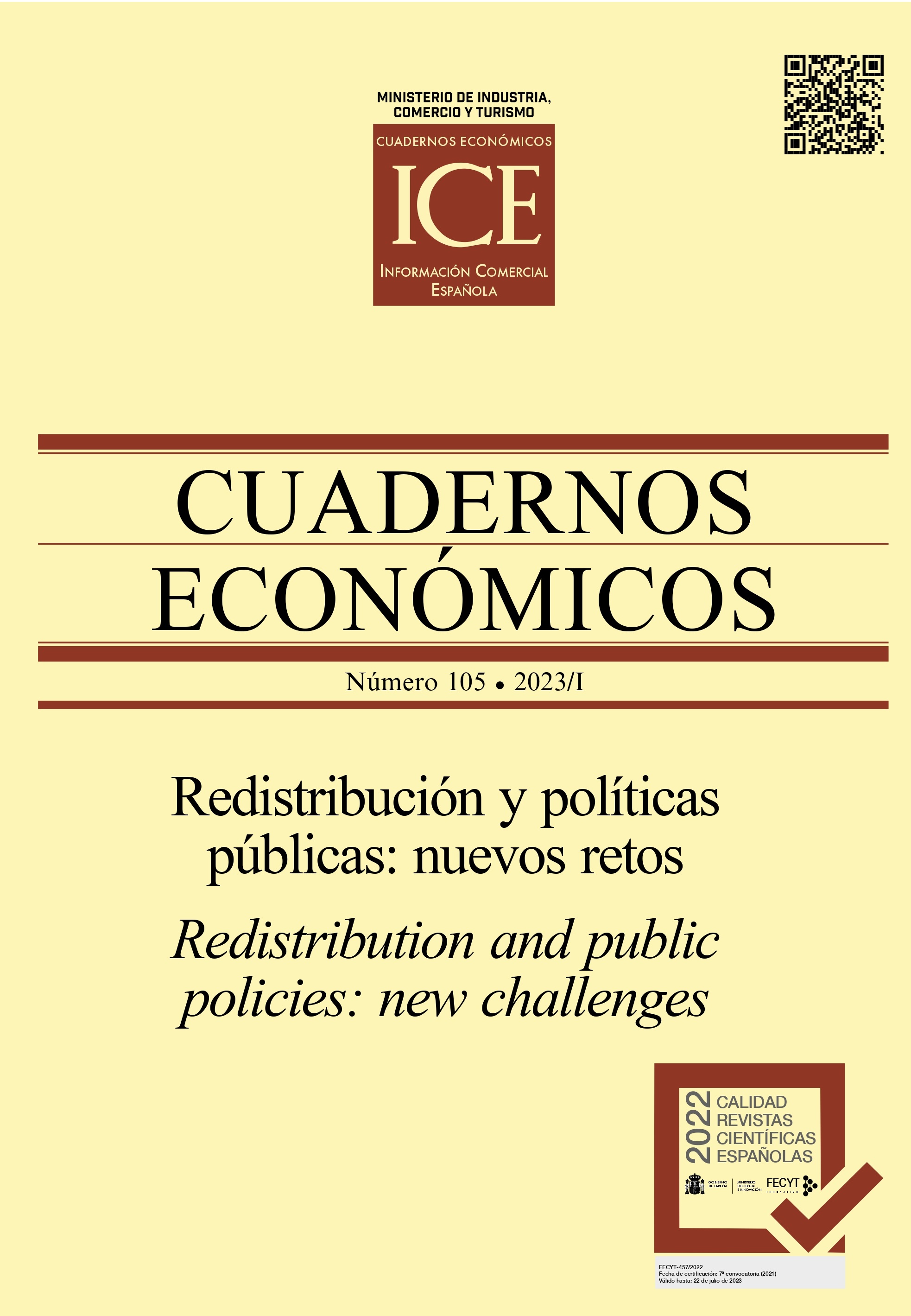What can wealth taxation do (and how)?
##plugins.themes.bootstrap3.article.sidebar##
Downloads
##plugins.themes.bootstrap3.article.main##
The goal of this article will be to help place in the same scheme the elements that should be taken into account to answer the initial question –What can wealth taxation contribute (and how)?– reviewing within it the arguments for and against wealth taxation and possible alternatives for the future.
##plugins.themes.bootstrap3.article.details##
Atkinson, A., & Stglitz, J. (1976). The design of tax structure: Direct versus indirect taxation. Journal of Public Economics, 6(1-2), 55-75.
Banco de España. (2019). Encuesta Financiera de las Familias (EFF) 2017: Métodos, resultados y cambios desde 2014 (Artículos Analíticos - Boletín Económico n.º 4/2019).
Chamley, C. (1986). Optimal Taxation of Capital Income in General Equilibrium with Infinite Lives. Econometrica, 54(3), 607-622.
Comité de personas expertas. (2022). Libro Blanco sobre la Reforma Tributaria. Instituto de Estudios Fiscales, Ministerio de Hacienda y Función Pública.
Díaz de Sarralde, S. (2014). El impuesto sobre la renta personal en el Informe Mirrlees. En J. Viñuela (coordinador), Opciones para una reforma del sistema tributario español (pp. 85-141). Editorial Centro de Estudios Ramón Areces, S. A.
Díaz de Sarralde, S. y Garcimartín, C. (2015). ¿Hay alternativas al modelo fiscal dominante? Una propuesta de impuesto global sobre la renta de las personas físicas. Ekonomiaz, 88, 2.º semestre.
Eichengreen, B. (1989). The Capital Levy in Theory and Practice (NBER Working Papers No. 3096). National Bureau of Economic Research.
European Commission. (2015a). Wealth distribution and taxation in EU Members (Taxation Papers, Working Paper No. 60 - 2015). European Commission’s Directorate-General for Taxation and Customs Union.
European Commission. (2015b). Taxing Wealth: Past, Present, Future (European Economy, Discussion Paper No. 003 | July 2015). European Commission’s Directorate-General for Economic and Financial Affairs.
European Commission. (2022). Taxation Trends in the European Union. European Commission’s Directorate-General for Taxation and Customs Union.
Institute for Fiscal Studies. (2010). Dimensions of Tax Design. The Mirrlees Review. Oxford University Press.
Institute for Fiscal Studies. (2011). Tax by Design. The Mirrlees Review. Oxford University Press.
Instituto de Estudios Fiscales. (2020). Opiniones y actitudes fiscales de los españoles en 2019 (Documentos de Trabajo n.º 9/2020).
Judd, K. L. (1985). Redistributive Taxation in a Simple Perfect Foresight Model. Journal of Public Economics, 28(1) 59-83.
López-Laborda, J., Marín-González, C. y Onrubia-Fernández, J. (2018). ¿Qué ha sucedido con el consumo y el ahorro en España durante la Gran Recesión? Un análisis por tipos de hogar. Estadística Española, 60(197 / 2018), 273-311.
Ministerio de Hacienda. (2021a). El Impuesto sobre la Renta de las Personas Físicas en 2017. Dirección General de Tributos. Subdirección General de Política Tributaria.
Ministerio de Hacienda. (2021b). El Impuesto sobre el Patrimonio en 2018. Dirección General de Tributos. Subdirección General de Política Tributaria.
OECD, Organisation for Economic Co-operation and Development. (2018). The Role and Design of Net Wealth Taxes in the OECD (OECD Tax Policy Studies No. 26). OECD Publishing.
OECD, Organisation for Economic Co-operation and Development. (2021). Inheritance Taxation in OECD Countries (OECD Tax Policy Studies No. 28). OECD Publishing.
Scheuer, F., & Slemrod, J. (2021). Taxing Our Wealth. Journal of Economic Perspectives, 35(1), 207-230.
Wealth Tax Commission. (2021). A wealth tax for the UK. https://www.ukwealth.tax/


